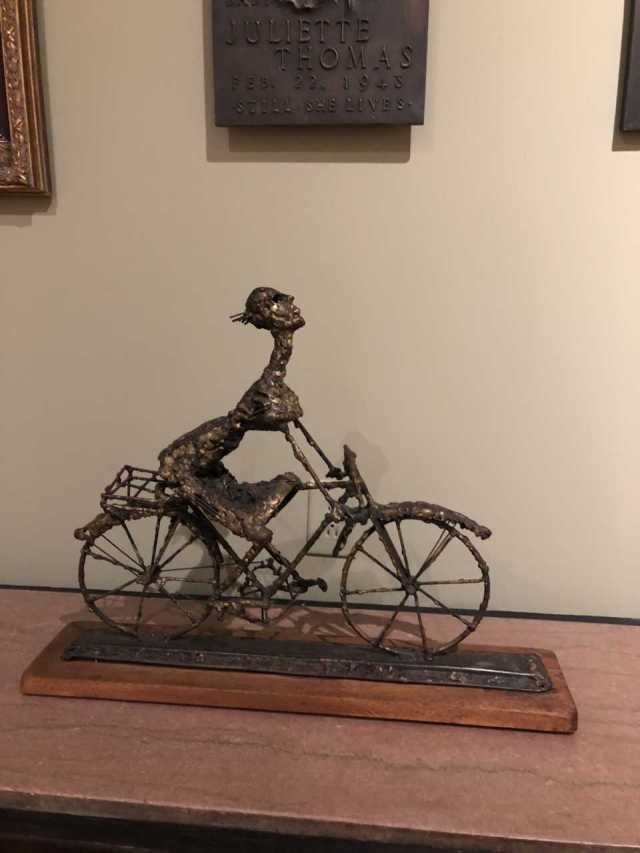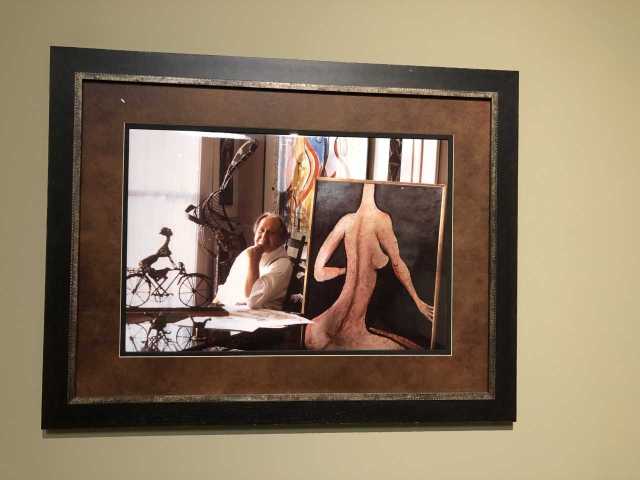The Pieta
1955 ca.
48 ½”h x 38”w
Figure
PAINTING- Mixed Media
#1636
By: Mary Margaret Rogers
In The Pieta, Steffen Thomas pays homage to his artistic hero, Michelangelo, by recreating one of his classic works of art. The religious piece depicts Mary holding the body of Jesus after the Crucifixion. Although Thomas’s rendition reflects these traditional components of the Pieta, he often referred to it as “The Good and the Bad Judge.” In Steffen Thomas-The Freedom of the Figure, Andrew Hayes and Alan Aiches explain Thomas’s title for the piece saying, “That perspective is derived from consideration of two sides to issues relating to Christ, and the figures in the background representing the two sides — the accused and the accuser. To Thomas, there are two sides to every issue.”
Pieta translates to Pity in Italian, which Thomas personifies through his use of dark colors throughout the piece; highlighting the tone of sorrow and desolation associated with the Crucifixion. There is a reverent feeling created by the mosaic stained glass frame resembling the windows found in churches and cathedrals. The placement of a crown at the top center of the painting with three crosses fixed around it further builds the religious setting of the piece by symbolizing the Holy Trinity. The drip style painting with its dark, confused lines combined with the clean cuts and edges of the mosaic frame creates a busy environment and exemplifies the mix of emotion the classic piece evokes.
The piece is inspired from Thomas’s time at the Academy of Fine Arts in Munich, Germany during the 1920s. It was during this time when he chose Michelangelo as his artistic muse after studying sculpture in Classical art. Thomas adopted several core artistic principles from Michelangelo, one he considered the most essential being “symbolism is all man knows, and art is symbolism.” His use of religious emblems, color style, and mix of mediums in The Pieta showcase this school of thought by portraying Thomas’s interpretation of the classic piece. Thomas continued to incorporate this fundamental idea into his works throughout his artistic career.




